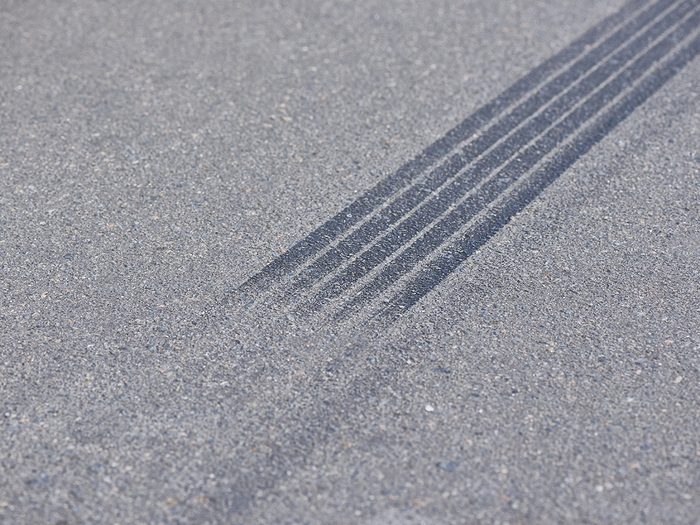
Stop and start aggressively
As glamorous as movies and TV shows might make it seem to slam on the accelerator and peel out onto the road, this is really not good for your car. Neither is braking super abruptly. Though the latter is sometimes necessary for safety reasons, you should definitely avoid doing it willy-nilly. “Love to peel away from a stop? Your mechanic will love you for it,” warns Matt Schmitz, assistant managing editor of Cars.com. “Driving gently will prolong your car’s life, and it will improve fuel efficiency and overall safety in the process.” In addition, slamming on the brakes repeatedly can wear on (what else?) the brakes.
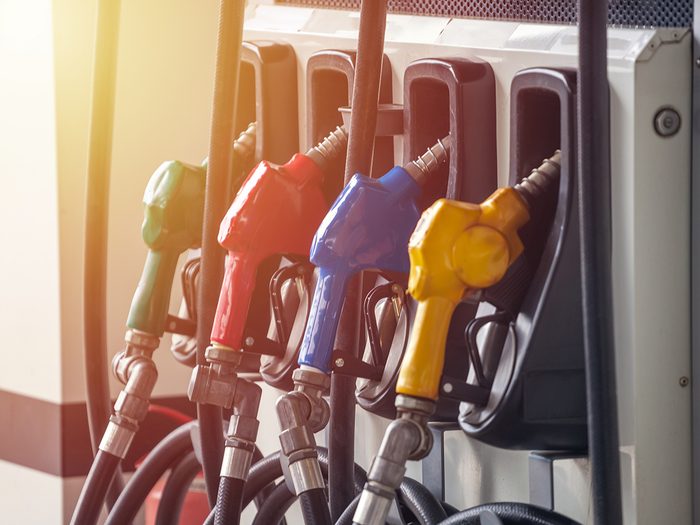
Using the wrong octane level of fuel
You probably already know that putting diesel in a gas car can be dangerous. But this applies to different octane levels of gasoline, too. “Vehicles are designed to run on a specific grade [of] gas,” says Jill Trotta, VP of the Auto Team at RepairPal. For instance, using lower-grade fuel in a high-performance vehicle can cause a decline in performance. And while doing the opposite, putting higher-grade fuel into a car that can run on regular ol’ gas, won’t cause any harm, there’s just no reason to do it. “[It’s] a waste of money and any performance benefit noted is most likely perceived and not real,” Trotta explains.
Check out the most expensive mistakes you’re making at the gas pumps.
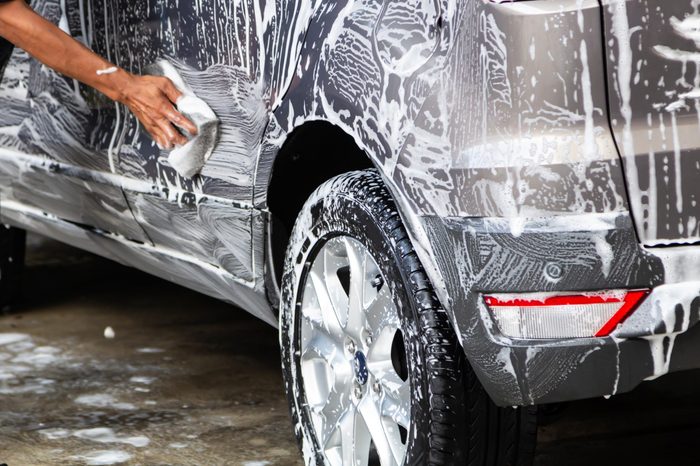
Neglecting cleaning
How often do you clean your car? Probably not often enough, according to Richard Reina, Product Training Director at CARiD.com. In addition to keeping the interior clean to prevent germs from accumulating on the surfaces you touch, keep an eye on the exterior as well. The paint and metal surfaces can deteriorate if you’re constantly letting dirt build up. And keep in mind that even the most thorough washing of the exterior of your car will probably neglect the undercarriage. “[The undercarriage] should receive a good wash at least once a quarter to remove any chemicals or debris that can cause corrosion and ultimately result in rust holes,” Reina says. He adds that cleaning your car is especially important during weather changes. And, of course, keeping the body clean and in good shape will also make your car more sellable!
Find out the surprising ways you’re devaluing your car.
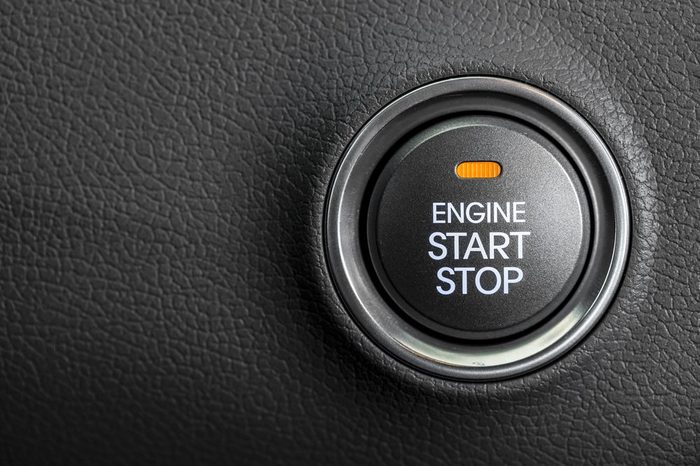
Driving full throttle right away
The directive that you need to “warm up” your car by letting your engine idle for a few minutes before you drive is somewhat outdated—it only applies to old carbureted engines. Idling your combustion engine like that really just wastes fuel; the best way to “warm up” your engine is by, well, driving it. You still should give your engine some time to warm up, but instead of letting your engine idle, you should just take care to “go easy on” your car right at first. “An engine will warm up faster if you drive lightly—no hard acceleration—for the first couple of minutes,” says Jenni Newman, editor-in-chief at Cars.com. You should especially take care to do this if you’re heading right onto a highway or climbing a hill.
Here are 10 car myths you need to stop believing.
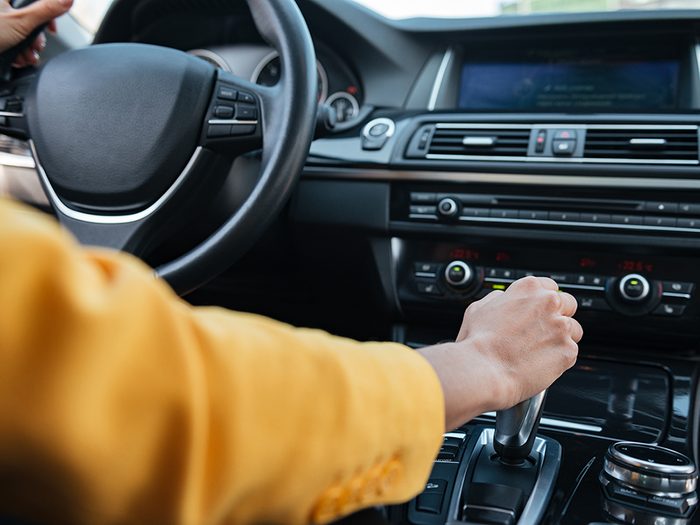
Shifting gears aggressively
We’ve already been over how hitting the gas and brakes aggressively and forcing your car to respond puts unnecessary strain on it. But the same is true for shifting gears abruptly and then immediately trying to get the car to go again. (Or stopping the car—abruptly throwing your car into park can be just as damaging as shifting rapidly between Drive and Reverse.) This is another tactic that seems beneficial when you’re in a rush, but Schmitz cautions against it. “Shifting while your car is still in motion can damage your transmission,” he says. Make sure your car is at a complete stop before shifting gears. And if your car is always jerky when starting and stopping, it could be one of the signs your car is about to die.
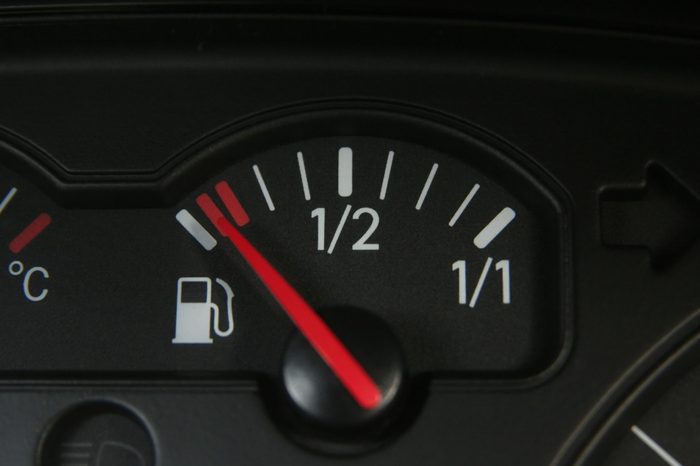
Driving until you’re almost out of gas
This is another finger-wagging driving tip that you may have heard but probably don’t give much thought to. And, of course, sometimes driving till you’re very low on gas can’t be avoided. But you should probably be trying! “Driving while the tank is low is a bad habit that mechanics and engineers will always avoid,” says Jake McKenzie, Content Manager at Auto Accessories Garage. If you drive when your tank is lower than a quarter of the way full, “the detritus and debris that are in your gas tank will typically settle on the bottom,” McKenzie explains. “When you let your vehicle run on fumes, you’ll be pumping a concentrated amount of gunk through your engine.” And, needless to say, that’s not great for it.
In addition, having plenty of gas in your tank will actually make your vehicle run more efficiently. “You’ll actually get better gas mileage when you have more gas in the tank” when the gasoline is emitting fewer fumes, McKenzie says. “Even though you’ll be carrying more weight, when there is less empty space in your tank, the gasoline will emit fewer fumes, and you’ll see more bang for your buck.”
Here’s how to find the cheapest gas station near you.
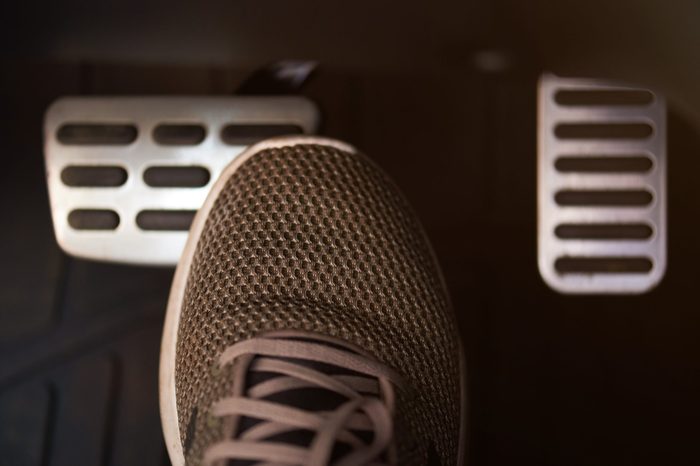
Power braking
“Power braking is one of the worst things you can do for an automatic transmission car,” explains Christopher Grozdon, Co-founder and CMO of DASH-SEO. “It’s basically fully pressing the brake first and then pressing the accelerator simultaneously until the wheels are about to budge. Then, releasing the brake causes an accelerated ‘launch’ of sorts.” This can be a bravado-infused “rev” of your car—a big no-no—but a less aggressive version of it can also be a common safety measure. You may have learned, perhaps even in driving school, a way to prevent your car from rolling backward when you’re braked on a hill and start moving again. It’s to do exactly that: With your foot still on the brake, hit the gas as well so that when your car starts moving, it’s moving forward.
But, unfortunately, doing this can harm the transmission, engine, and even the brakes. Instead of using a “power braking” method, Grozdon recommends twisting your wheels to the left or right, as you would when parking on a hill, to keep your car from rolling backward too far.
Find out when you should (and shouldn’t) use your emergency brake.
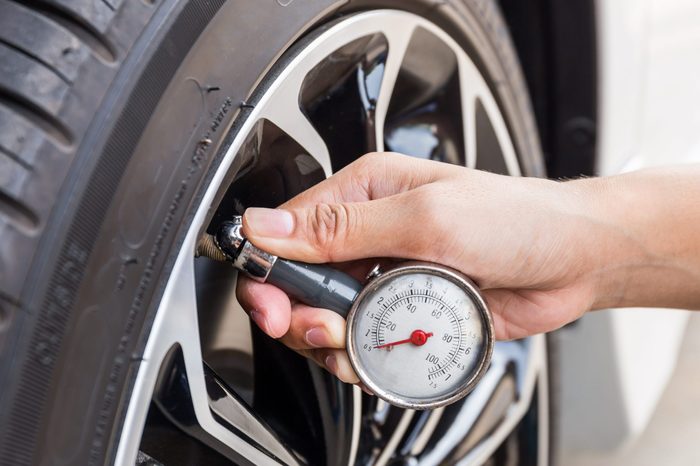
Letting tire pressure get too low
Understanding how tire pressure works can toe the boundary into confusing car jargon. But there are still unfortunate consequences in neglecting this important car feature. And checking tire pressure is not as challenging as you might think; in fact, Reina calls it “one of the easiest and cheapest checks to perform.” “Check your vehicle’s suggested pressure for each tire—check the exact numbers on the tire pressure label, usually found in the driver’s door jamb,” he advises. One thing he stresses is that you should be doing this “check” after your car hasn’t been driven for a little while, to avoid an inaccurate reading from the heat and friction created by driving. In general, think about doing this check around once a month—don’t assume it’ll automatically be done when you get an oil change.
This is the ideal tire pressure in cold weather.
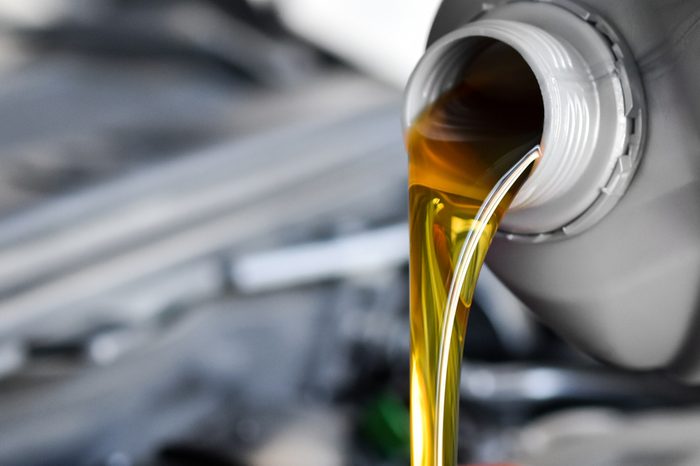
Neglecting oil changes
Getting an oil change can be one of the most burdensome maintenance jobs to stay on top of, especially since it needs to be done fairly frequently compared to many others. But don’t neglect it! In between oil changes, keep an eye on your car’s oil level. “The car’s oil ensures that all parts of your engine run smoothly, so it’s critical that its level is maintained and kept in order,” says Bryan Rodgers, Owner of Rodgers Performance, a top-dealer alternative Audi repair and service specialist. Experts recommend consulting your mechanic, and/or your car’s manual, to get a good idea of how often you actually need an oil change, and then set yourself a reminder, that you’re going to acknowledge, accordingly.
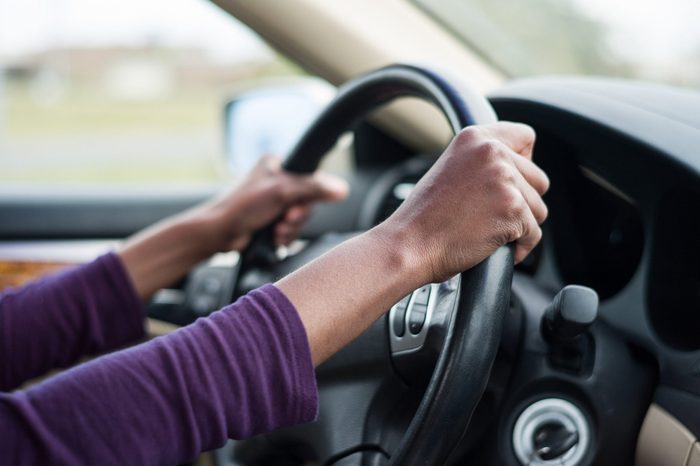
Driving light on the gas pedal
Okay… Weren’t we just saying not to ram the pedal too hard?! Yes, but there’s a difference between aggressively “flooring it” and putting an adequate amount of pressure on the pedal. “Engines are made to be driven,” says Trotta. “Always [being] light on the gas pedal, trying to ‘save’ the engine… will cause carbon buildup in the combustion chamber. The engine needs to be pushed a bit harder on occasion to help clear these deposits.”
Here are more driving tips you’ve probably forgotten since driver’s ed.
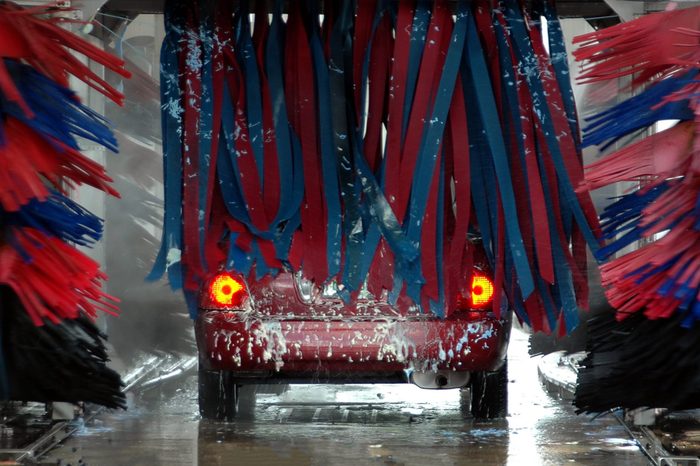
Going through car washes
Again…this is another one that requires a balance. Washing your car is of paramount importance, of course. But recently, car pros have become disenchanted with the automated car washes, pondering whether they do more harm than good. Roslyn McKenna, Car Insurance Publisher for Finder.com, reports that “the bristles on the automated car washes can damage your car’s paint or even take off a windshield wiper.” So what does she recommend instead? “Wash it by hand with a non-abrasive cloth and soap designed not to damage paint.”
These car cleaning tricks from the pros will come in handy.
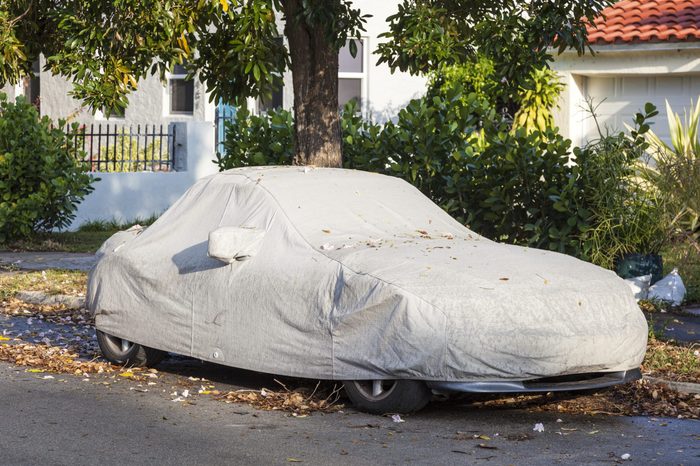
Driving it rarely
Of course, sometimes letting your car sit dormant is unavoidable—if you go on vacation or have a classic that needs to be stored over the winter, for instance. But as a general rule, you should be taking your car for a spin at least once a week. “If your…car is left sitting in the driveway for a few months, the battery could die, the tires could deflate, parts could rust, and the fluids could dry up,” warns McKenna. To keep your rarely-driven car from entering this potentially dangerous “dormant mode,” “make sure you’re taking [it] for a spin once a week for at least 15–30 minutes to keep it in tune and burn off the engine condensation,” McKenna says.
Use this ultimate car maintenance schedule to keep your ride in top condition.
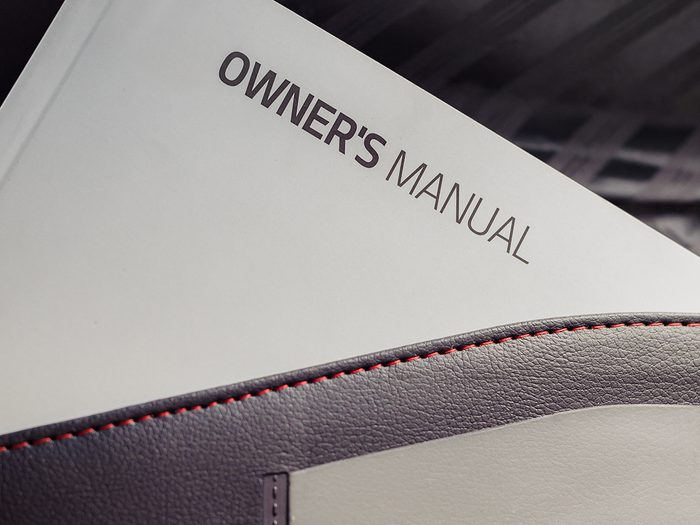
Not reading the manual
This is another tip that you probably just roll your eyes at. Who has time to read a car’s entire manual?! And Rodgers even acknowledges this: “Drivers also need to read the car manual. Nobody ever does, but there are actually many useful tips in it,” he says. “If you read your car manual, you’ll have a better idea of what to do and what not to do, as well as what to check and what to change regularly. ”
Here are 20 secrets your mechanic won’t tell you.

Altering factory settings
If it ain’t broke, don’t fix it. This is Darryl Keckler, Service Director at Wilson County Motors’ advice when he tells people not to add anything to their cars that will alter the factory settings. This can include everything from “a computer chip to increase power” to widgets supposedly offering better fuel economy to anti-theft devices or remote starting features that will mess with the factory settings. You bought a car because you preferred that car, so don’t go Frankenstein-ing it with features that it doesn’t have.
Find out more things you should never do to your car.
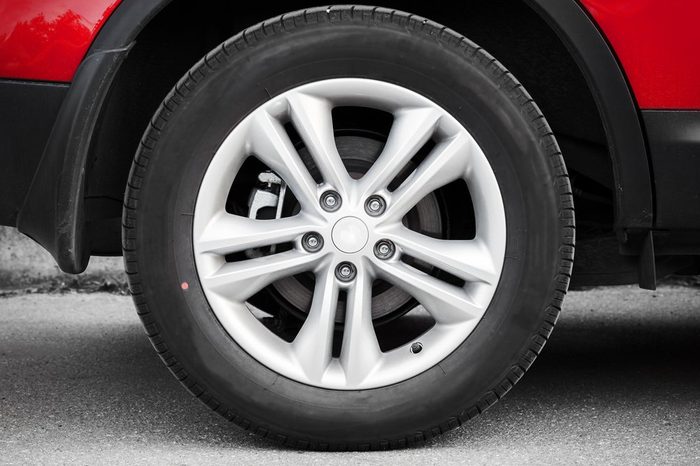
Mixing and matching tires
If you use tires of differing sizes or brands on the same car, you might get more than you bargained for. “Doing so will affect more than just the ride,” Keckler told RD.com. “It changes ABS operations [and] it changes speedometer and wheel sensor operations.” And you definitely want all of those things to be working! You can imagine how quickly an inaccurate speedometer could get you into trouble.
Next, find out what could happen if you leave your winter tires on year-round.